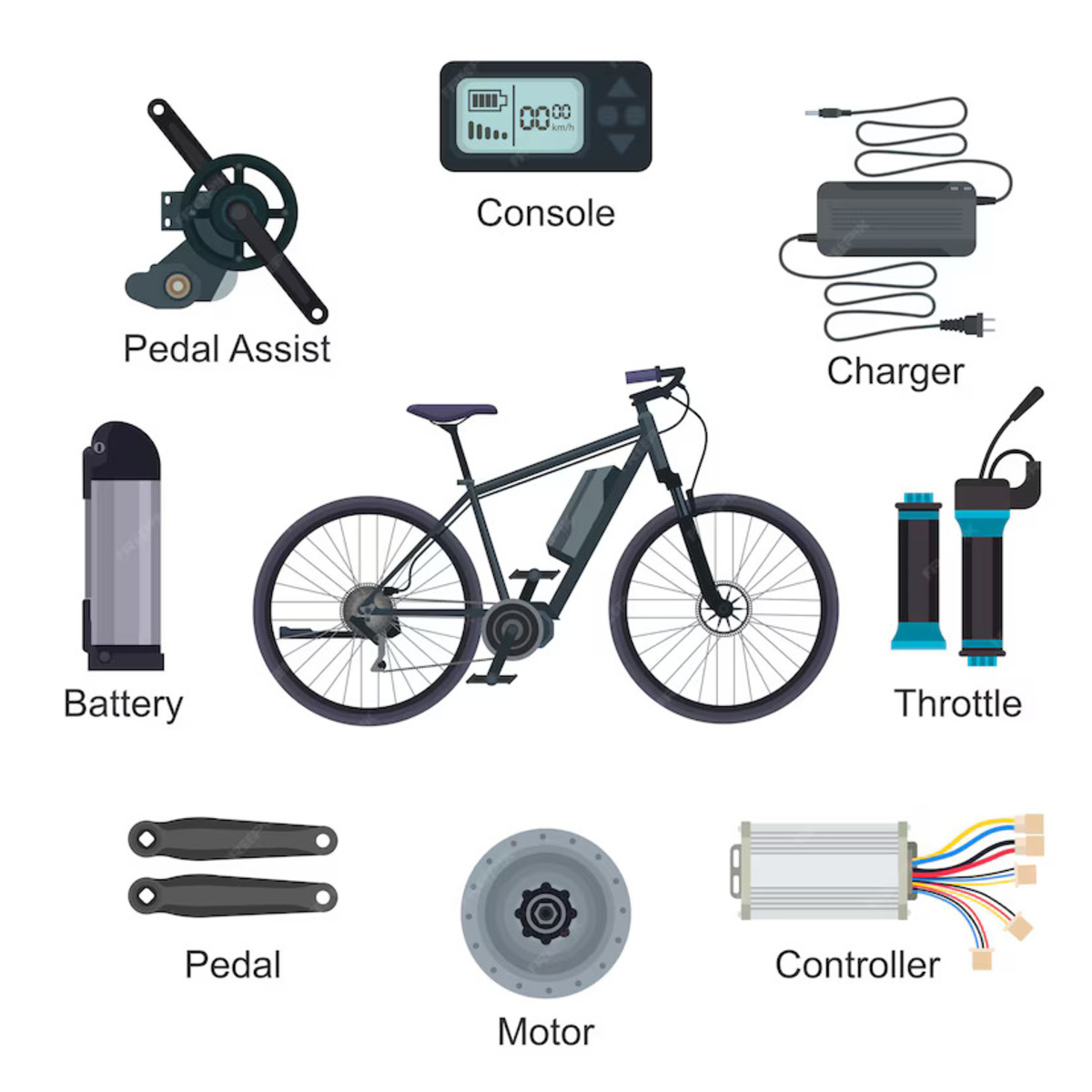Here we will focus on the 10 reasons electric cars will be cheaper in the coming days.
India records a big jump in electric vehicle sales in 2023, and more is expected in 2024. Automobile companies are growing, and many companies are adopting sustainability goals, including a transition to electric fleets, as India is committed to attaining decarbonizing transport by 2070. This move aligns with corporate social responsibility initiatives and helps companies meet environmental targets. The Indian government is focusing on renewable energy in India. It has set a target to achieve 450 GW of renewable energy by 2030 which would help reduce the carbon footprint and increase sustainability. However, the automotive industry is actively working to make electric cars cheaper in the coming years.
Gradually, the future of electric vehicles is taking shape to move ahead. The main point is that electric vehicles will be as cheap as traditional vehicles, which seems possible this year as many manufacturing companies are focusing on the use of recycled products.
The rising demand for electric vehicles in India shows the awareness of people towards the environment. The government is taking initiatives to develop electric vehicles that will not hinder their adoption, and as they improve air quality and emit no gas, their future will be developed in India. Shailesh Chandra, MD of Tata Passenger Electric Mobility, says that the price of EV and ICE vehicles will be the same in 12-18 months. Here we will get the details of those factors that are responsible for making electric vehicles cheaper:
Also read:
Best Top 10 Electric Vehicle Stocks
8 Winning Marketing Strategies For Electric Vehicle
10 Reasons Electric Cars Will Be Cheaper
- Reduction in the Cost of a Battery Pack
- Policies and Incentives
- Economy of Sale
- Reduction in the Cost of Raw Materials
- Expansion of Charging Stations
- Competition among Manufacturers
- Research and Development for Improving Energy Efficiency
- Collaboration and Standardization
- Life Cycle Cost Consideration
- Customer Education
Now we will discuss the above points of 10 Reasons Electric Cars Will Be Cheaper in detail:
1. Reduction in the Cost of a Battery Pack
The cost of batteries is one of the biggest issues that enhances the overall cost of EVs. It is expected that the cost of batteries will decrease in 2030 compared to 2023. Day-by-day advancements in battery technology will improve the overall efficiency and reduce the cost of electric vehicles.
With various innovations in the EV industry, the market is buzzing with the development of insulation in electric batteries. Manufacturers are focusing on it and trying to get better range and higher voltage. By taking advantage of this technology, it can enhance the range and reduce the charging time. It helps to extend the life of EV batteries and reduce the cost of EVs. If the manufacturers use cost-effective materials in the production of batteries, it can also contribute to reducing the cost of EVs.
The use of high-energy density batteries is capable enough to enhance the range of the vehicle with less material and lessen the cost of EVs.
2. Policies and Incentives
It is vital to switch to electric vehicles; then only the government plan to be 30 percent electrified by 2030 would be possible. To encourage the adoption of electric vehicles, the government has announced numerous incentives and policies, such as PLI (production linked incentive) on advanced chemistry cells (ACC) for battery storage and Fame schemes I and II. Fortunately, many states in India provide benefits for the purchase of electric vehicles, such as subsidies on the purchase of electric vehicles, exemptions from registration and road fees, and many more. These incentives are helpful to diminish the cost of electric vehicles.
The Fame 2 incentive scheme was to inspire in March 2024, but Dr. Hanif Qureshi, additional secretary of the Ministry of Heavy Industry, stated that incentives for Fame 2 benefits would continue beyond March 2024. The statement further explains that if the Fame 2 incentive scheme expires, the Fame 3 scheme would be implemented, and surely it would be a push for Indians to choose greener options, and it would be a great benefit to those who are planning to buy an electric vehicle in the coming year.
The government can offer some incentives to manufacturers to produce cost-effective EVs. Besides these PLI and Fame schemes, it is considered that the government is planning to take the next step to incentivize electric vehicles, in which the government can reduce the import duty on fully built cars, and it may be that it will be reduced for a limited period only if a company commits to manufacture in India.
3. Economy of Sale
If the demand for EVs increases, the production volume of electric vehicles will increase, and manufacturers can achieve economies of scale. Higher production quantities often lead to reduced manufacturing costs per unit, as fixed costs are spread over more vehicles. This is particularly relevant for components like batteries and electric motors. A higher demand for electric vehicles can drive innovation and cost reduction.
4. Reduction in the Cost of Raw Materials
Raw materials for EV batteries, such as lithium, cobalt, and nickel, contribute to the overall cost of EVs. Innovation in battery chemistry will lower the cost of EVs. Automakers are coming up with new technology in the EV that shows the vibrant future of the auto industry, and the discovery of lithium-ion reserves in Jammu and Kashmir exhibits the unique achievement of India in the EV market. Lithium is the most used component in the production of electric vehicles, and its availability in India will surely cut down on the price of EVs because, for lithium, we are dependent on other countries. It is a positive aspect of innovation and discovery in the field of EV.
Manufacturers should focus on developing recycling programs to recover and reuse materials that will reduce dependence on new resources, helping to cut down on the cost of electric vehicles.
5. Expansion of Charging Stations
If the market share of EVs grows, manufacturers will prioritize EV production, which will make the EVs cheaper. Boosting the charging network will surely put less emphasis on manufacturers using range-boosting batteries, and then it will make the vehicle cheaper to produce, leading to lower prices for the customer. A larger market may encourage manufacturers to lower prices to capture a larger share of the market.
The development of charging infrastructure is essential for the widespread adoption of electric vehicles and can enhance the appeal of electric vehicles. As charging infrastructure becomes more accessible and widespread, it can contribute to the overall affordability and convenience of electric cars. Increasing the number of charging stations will put less pressure on those manufacturers who are trying to increase their models with a maximum range and a lower price.
Increasing the number of charging stations alleviates the anxiety of running out of power and instills confidence in users about the availability of charging stations, so they may be willing to buy them, and increased EV adoption can drive down production costs.
6. Competition among Manufacturers
When new companies enter the market with the launch of EVs at a cheaper price, existing manufacturers need to lower their costs to expand their businesses. Increased competition in the market for electric cars drives manufacturers to lower their prices if they want to remain competitive. Consumers can take advantage of cheaper electric cars and vehicles.
7. Research and Development for Improving Energy Efficiency
Research and development for the advancement of electric vehicles can accelerate innovation, leading to cost reduction. Improvements in the overall energy efficiency of electric vehicles, by focusing on electric motors and drivetrain systems, can make components less expensive, overall cutting down on the price of EVs.
Exploration of new technologies and more efficient electric motors can improve overall efficiency and reduce costs.
8. Collaboration and Standardization
If manufacturing companies collaborate among industry players to establish common standards, this can lead to cost savings. Shared technologies and components can reduce manufacturing costs, which automatically makes electric cars cheaper.
9. Life Cycle Cost Consideration
Life cycle cost plays a crucial role in reducing the cost of electric cars as it provides a detailed assessment of cost throughout the entire life span of the vehicle. The total cost of ownership evaluates all costs associated with owning and operating the vehicle for its entire life. It includes everything like the purchase price, maintenance cost, insurance cost, electricity cost, etc. The lower maintenance cost of the electric vehicle compared to traditional vehicles can offset the initial investment.
10. Customer Education
Consumers should be educated to understand the long-term cost benefits of electric vehicles. The electricity that is used to power the vehicle costs less than that of petrol or diesel used in combustion engines.
Conclusion
It is challenging to pinpoint an exact timeframe for when electric cars will become cheaper, as the cost of electric vehicles depends on various factors, such as the pace of technological advancements, market dynamics, and government policies. The combination of 10 Reasons Electric Cars Will Be Cheaper will be helpful in reducing the cost of electric vehicles, as when production increases, the affordability of electric vehicles continues.




